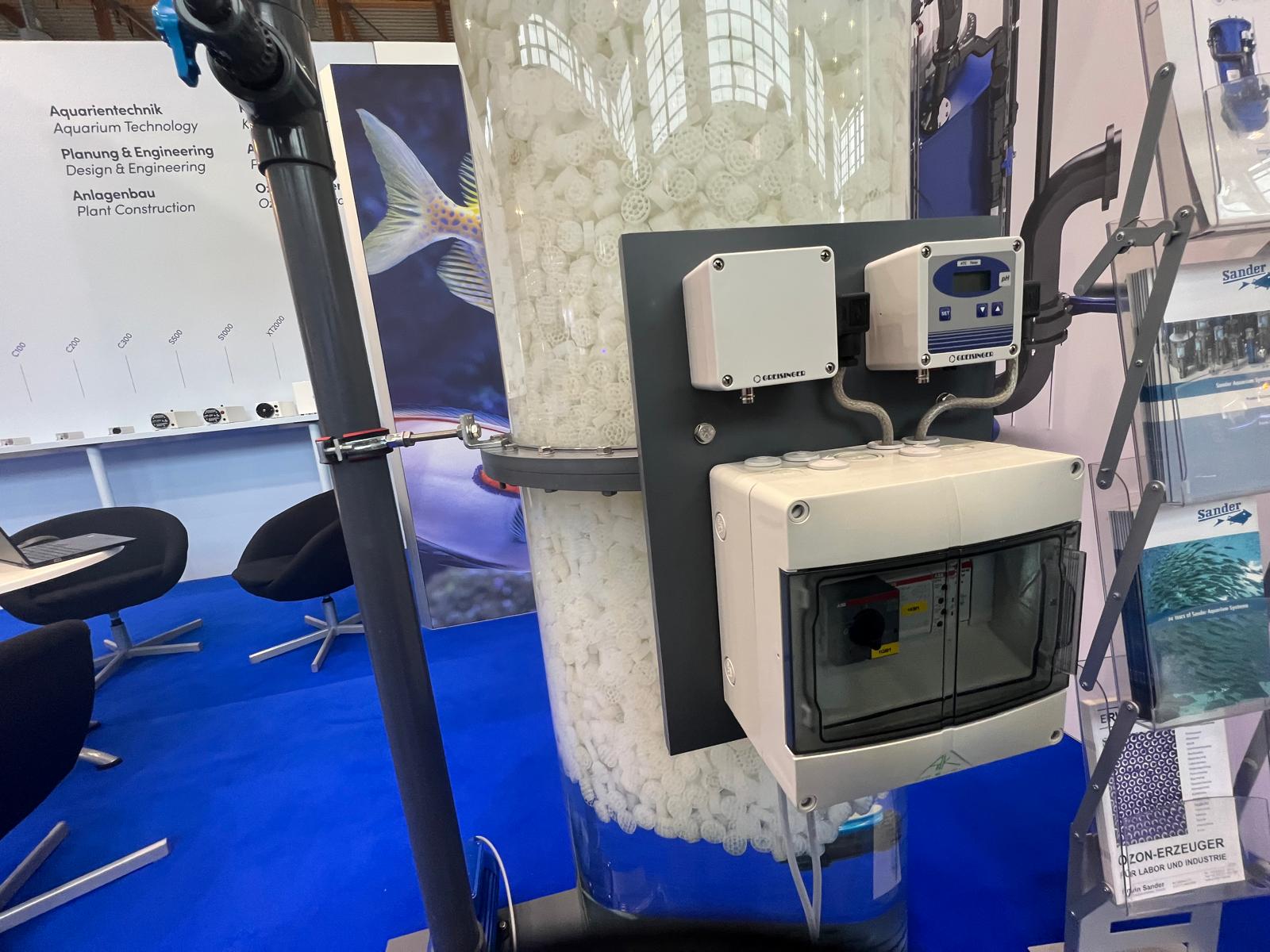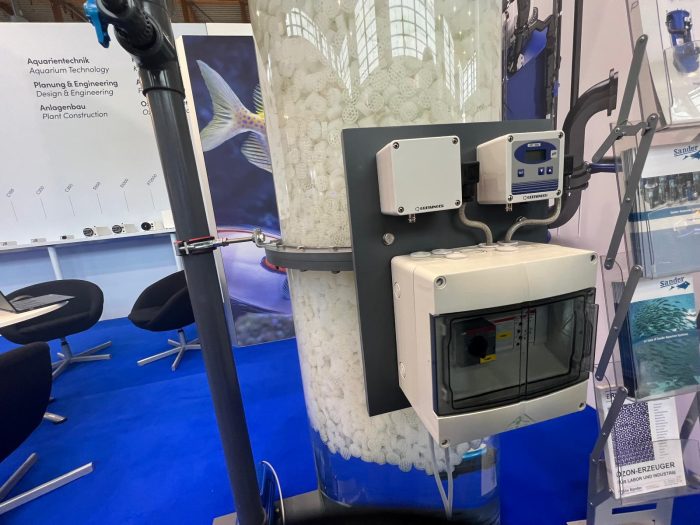“Nitrat is meistens der Endstoff” – but not always
During Interzoo 2024, I spoke with an employee of SANDER BV about an innovative filter system that enables biological denitrification.
Denitrification – the process by which nitrate (NO₃-) is converted to nitrogen gas (N₂) – is usually the final part of the nitrogen cycle.
But in many aquatic systems, such as aquariums and also koi ponds, nitrate often remains as the end product. Esther:
“Nitrat is usually the end station. That’s not necessarily a bad thing, but if it builds up, eventually you have to get it out of the system.
”
That’s where this filtration system comes in.
Closed system for targeted denitrification
The system SANDER developed uses a closed, low-oxygen compartment in which denitrifying bacteria are active.
These bacteria get their needed oxygen not from the air or water, but from the nitrate molecule itself.
This creates nitrogen gas that leaves the system via diffusion.
“The key is that no oxygen is blown into this part of the filter. This allows the right bacteria to do their job,” Esther explains.
This also requires a carbon source – acetic acid, for example – which serves as a food for the bacteria.
Benefits of controlled denitrification
Esther emphasizes that spontaneous denitrification can also occur in biofilms of open filters, but it is unpredictable:
“In a biofilm, sometimes an oxygen-poor layer can form where denitrification takes place, but that is never targeted or controllable.”
With this system, we can work very precisely via redox measurements and pH control.
”
Thus, the system offers advantages for plants where stability is essential – such as large aquariums, research setups or animal systems where water quality needs to be closely monitored.
Is this relevant to koi ponds?
Although the system is not specifically designed for koi ponds, Esther says it does offer possibilities:
“Whether you need it is another question. In koi ponds you often have algae, especially in the spring, but no plants that absorb nitrogen.
Then in theory this could help, if properly tuned.”
She notes that in the koi scene, drum filters and sand filters are common, with protein skimmers as an additional option. Denitrification as a separate filter step she still rarely sees applied in ponds.

Scalability and application
The unit shown at Interzoo is currently the smallest SANDER supplies. It is a new development, still in full development. Esther:
“We are open to further development – also toward specific applications. This system runs stably, is modular and can be scaled up as needed.”
Lock
The interview with Esther made it clear that SANDER focuses on high-quality, controllable water treatment. Denitrification is not an accident in this, but a planned process.
For Koi hobbyists, this can be an interesting direction – especially where nitrogen accumulation, algae blooms or limited water changes are a factor.
Location: Interzoo 2024, Nuremberg
Report: Tiebo Jacobs, KoiQuestion
Interview partner: SANDER BV
Topic: Biological denitrification and closed filtration systems for aquatic applications



